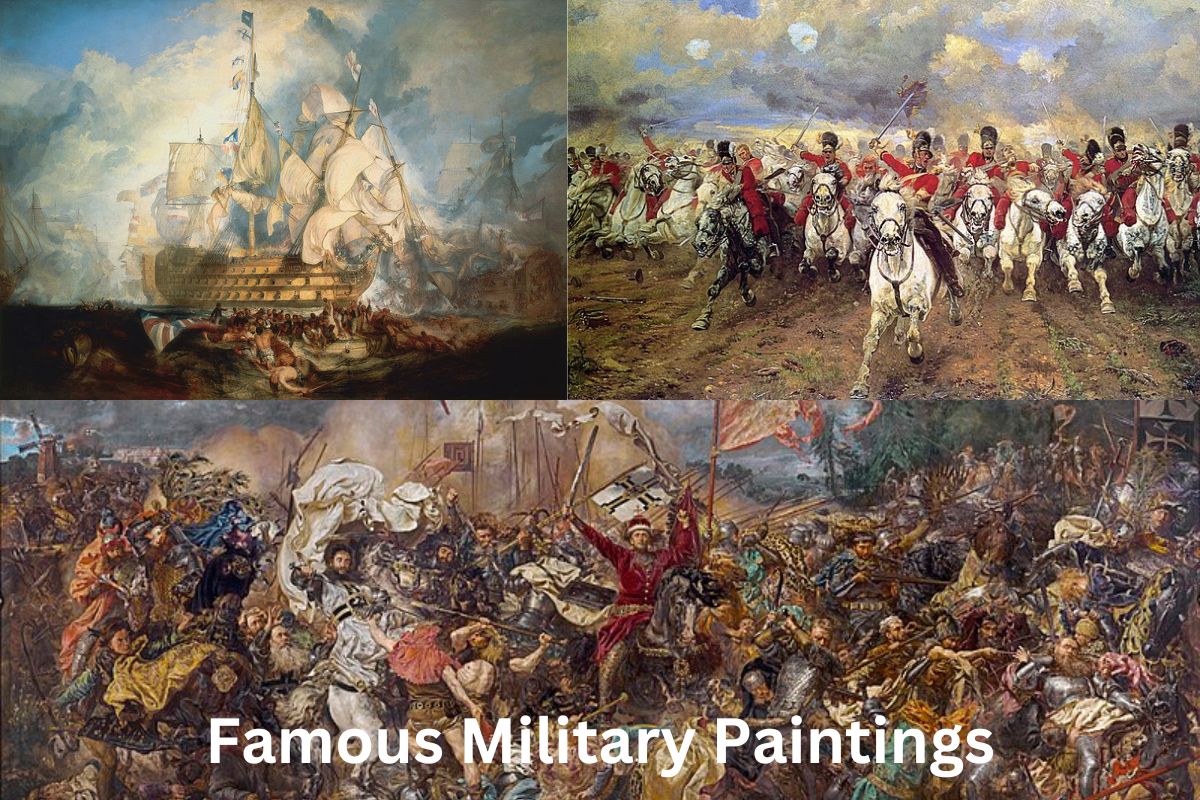The term “military art” refers to any kind or medium of artistic production that deals with a military theme. As a result of the fact that rulers of established civilizations have always been eager to celebrate their victories and terrify potential adversaries, the depiction of a war scene is one of the earliest genres of art.
It has taken a great deal more time to perfect the depiction of other aspects of conflict, particularly the pain and anguish endured by casualties and civilians.
In addition to images of prominent military individuals, it has been quite usual to show anonymous troops in settings away from the battlefield. Ever with the introduction of military uniforms, such works frequently concentrate on demonstrating the range of different types of clothing.
Famous Military Paintings
1. Battle of Grunwald – Jan Matejko
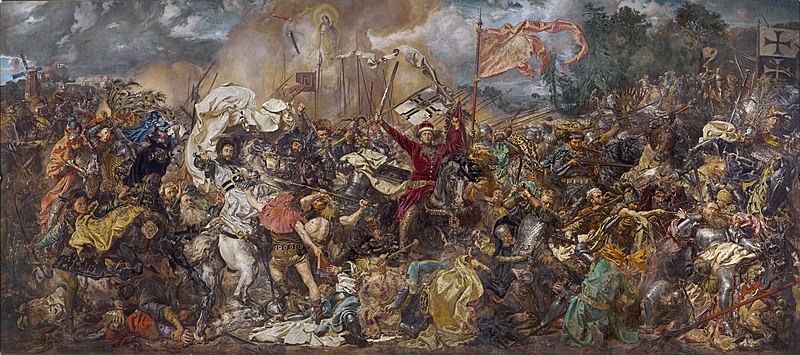
Artist Jan Matejko immortalized the 1410 triumph of the Crown of the Kingdom of Poland and the Grand Duchy of Lithuania against the Teutonic Order in his painting The Battle of Grunwald.
The painting is one of the most famous depictions of heroic events in Polish and Lithuanian history, and it dates back to 1878. It is shown in the National Museum in Warsaw.
Also Read: Famous Battle Paintings
The painting’s major emphasis is the death scene of the Grand Master of the Teutonic Order, Ulrich von Jungingen; another key figure is the Lithuanian grand duke Vytautas the Great, clad in crimson with a raised sword.
Complexity has been both a strength and a weakness of the painting. One of Matejko’s most famous pieces, it has helped cement the legendary status of the Battle of Grunwald in the minds of Poles.
2. The Battle of Trafalgar – J. M. W. Turner
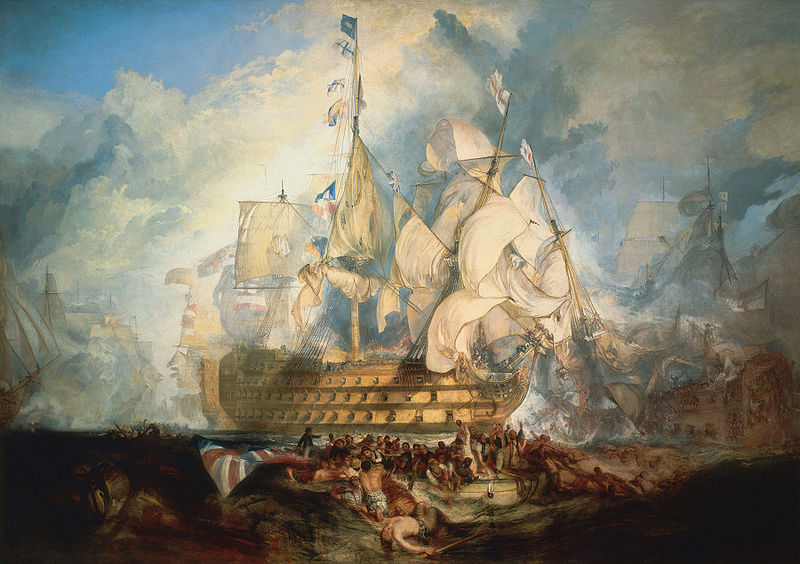
British artist J. M. W. Turner painted The Battle of Trafalgar, 21 October 1805, in 1822. To celebrate the military achievements of the Hanoverian monarchy and decorate three state reception halls in St. James’s Palace, King George IV commissioned this set of paintings.
Designed as a companion piece to Lord Howe’s action of the Glorious First of June by Philippe-Jacques de Loutherbourg, this was Turner’s only royal commission.
This is his largest piece, measuring in at 2,615 mm (8 ft 6 + 15/16 in) by 3,685 mm (12 ft 1 + 1/16 in).
Not long after its initial installation, it was donated to Greenwich Hospital. The picture was donated to the National Maritime Museum in Greenwich, London.
3. Scotland Forever! – Elizabeth Thompson
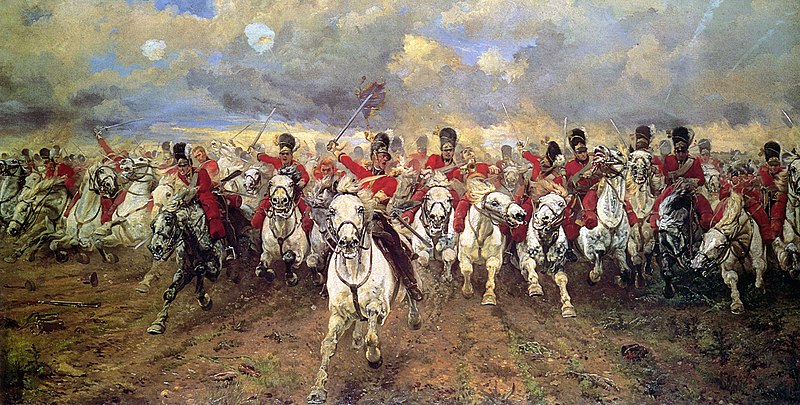
The Royal Scots Greys were a British heavy cavalry regiment that charged alongside other British heavy cavalry at the Battle of Waterloo in 1815. Scotland Forever! is an oil painting that was completed in 1881 by Lady Butler and depicts the beginning of the charge of the Royal Scots Greys.
The picture has been copied numerous times and is regarded as an iconic portrayal of both the combat in question and valor in general.
The aesthetic paintings that Butler viewed and so strongly disapproved of during her excursion to the Grosvenor Gallery served as the impetus for her to create the picture that is now known as “the charge.”
After receiving positive feedback for her earlier painting The Roll Call of 1874, which depicted a scene from the Crimean War, and her later painting Remnants of an Army, which depicted the 1842 retreat from Kabul, she gained a reputation for her military paintings. Her subjects included the retreat from Kabul in 1842.
Even though Butler had never seen a fight in person, she was given permission to witness her husband’s regiment participate in training exercises. She was instructed to position herself in front of charging horses so that she could see how the animals moved.
4. The Defence of Rorke’s Drift – Elizabeth Thompson
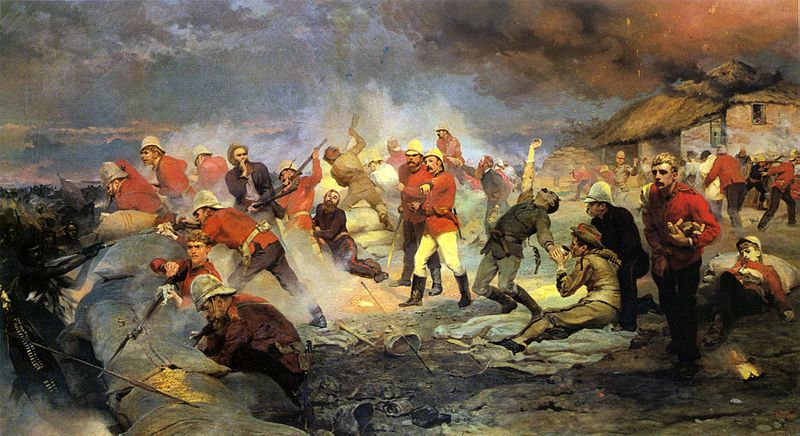
This painting by Elizabeth Thompson, Lady Butler, titled The Defence of Rorke’s Drift, dates back to 1880 and depicts the 1879 Battle of Rorke’s Drift, which occurred during the Anglo-Zulu War of 1877–1879.
Zulu, a film released in 1964, brought worldwide attention to the conflict and the troops who participated in it.
The Battle of Rorke’s Drift sparked a wave of patriotic fervor in Britain, and the survivors, especially the officers, were feted upon their return in October 1879. They were first invited to Windsor Castle to meet Queen Victoria, and then they posed for Elizabeth Thompson in Portsmouth, where the regiment was stationed.
They acted out the combat for her and told her their own tales. The picture, which was finished in 1880, has been in the Royal Collection ever since.
5. The Sortie Made by the Garrison of Gibraltar – John Trumbull
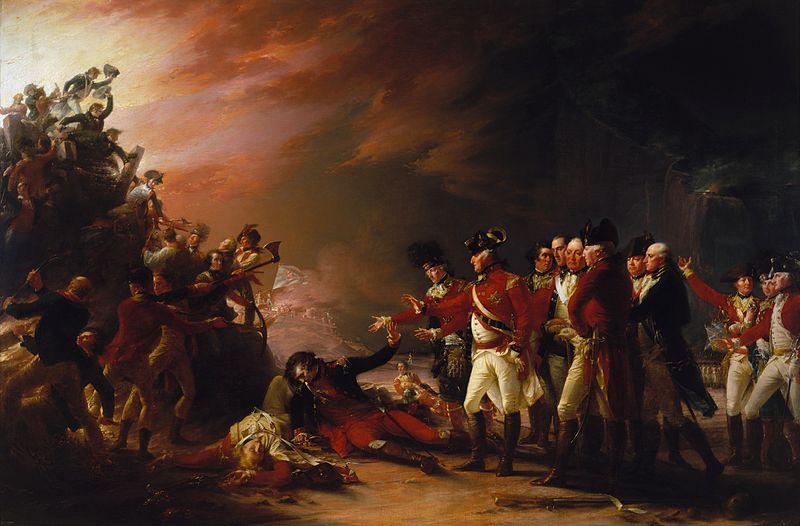
The Sortie Made by the Garrison of Gibraltar is an oil-on-canvas work that was completed by the American artist John Trumbull in the year 1789. It is also known as The Sortie made by the Garrison of Gibraltar in the Morning of the 27 of November 1781.
The artwork depicts a pivotal moment in Gibraltar’s history, which occurred in November 1781 when the Spanish launched the Great Siege of Gibraltar against the British who were stationed at Gibraltar.
As he lies on his deathbed, the Spanish officer Don Jose de Barboza is being shown respect by his peers. Even though he was left behind by his own fleeing men, he nevertheless attempted to assault the British troops in a chivalrous manner, but he was unsuccessful.
6. The Charging Chasseur – Théodore Géricault
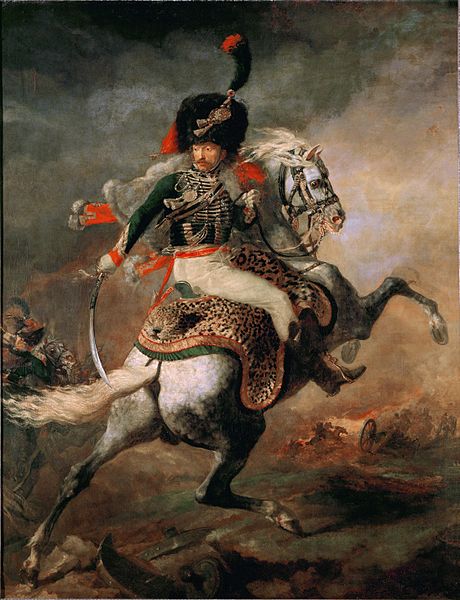
The French artist Théodore Géricault painted Chasseur, or An Officer of the Imperial Horse Guards Charging on canvas in 1812. The image depicts a mounted Napoleonic cavalry officer who is ready to charge.
This painting was Géricault’s first public showing, and it exemplifies his efforts to distill motion and form into a single composition.
Although its subject matter is comparable to that of Jacques-Louis David’s Napoleon Crossing the Alps, the painting’s dramatic diagonal composition and forceful paint application set it apart from David’s traditional work.
According to the viewer of The Charging Chasseur, the horse is rearing to escape from an invisible foe. Although the perspective is different, the figure on the rearing horse was inspired by Rubens’s enormous early Saint George (Museo del Prado, 1605-07).
Géricault’s later masterpiece, “The Raft of the Medusa,” exemplifies his continued departure from classicism (1818–19).
7. Triumphs of Caesar – Andrea Mantegna
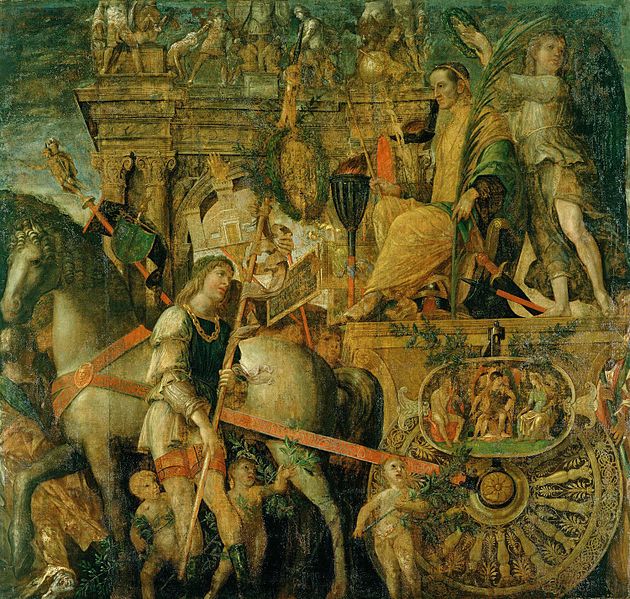
Between 1484 and 1492, Italian Renaissance artist Andrea Mantegna worked on a set of nine monumental paintings titled The Triumphs of Caesar at the Gonzaga Ducal Palace in Mantua.
They show a military procession in triumph after Julius Caesar defeated the Gauls.
Recognized even during Mantegna’s lifetime as his finest work, these paintings continue to constitute the largest metric area of Italian Renaissance artwork outside of Italy and are the most comprehensive visual depiction of a Roman triumph ever attempted.
They were purchased by Charles I in 1629 and are now part of the Royal Collection at Hampton Court Palace outside of London. They are displayed in a dedicated gallery and have recently been given a new continuous frame that is meant to evoke the atmosphere of their original mounting inside paneling.
The paintings, which were originally executed in the delicate medium of egg and glue tempera on canvas, have been subjected to multiple restorations and retouches over the course of several centuries, and now bear the marks of each. One canvas is 2.66 m by 2.78 m. Together, they’re larger than 70 square meters.
8. Napoleon Crossing the Alps – Jacques-Louis David
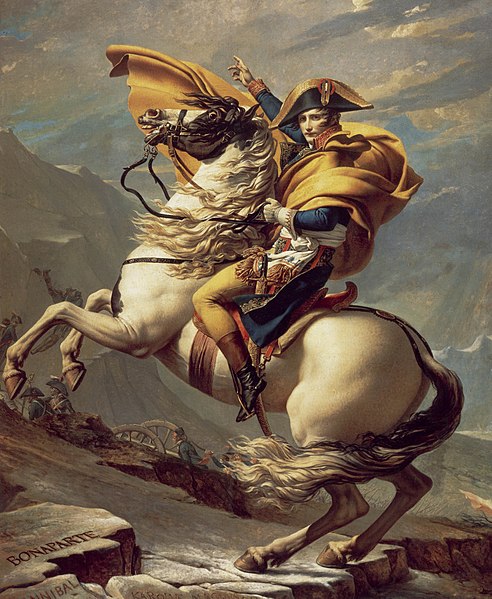
Jacques-Louis David is among the most famous Neoclassical artists because of his many portraits of prominent figures in politics and the arts.
David’s paintings of Napoleonic battles, which he began in 1801, have become iconic. The works paid tribute to Napoleon’s fabled overland march across the Alps, one of the world’s most dangerous mountain ranges.
The leader was able to reinforce his men in Italy by leading them through narrow tunnels that twisted their way around the snow-capped peaks.
David was charged with making a few pieces to celebrate what was, at the time, one of the most audacious and cunning military strategies in recent memory.
9. Dawn at the Alamo – Henry Arthur McArdle
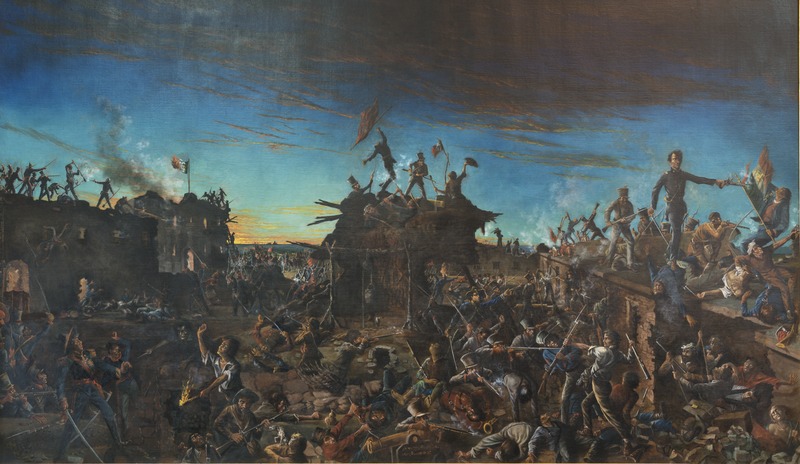
After the 1881 fire at the old limestone Capitol, which destroyed an earlier version of this painting, Henry Arthur McArdle (1836-1908) worked to complete it. The painting hangs in the Senate Chamber, and its dimensions are over eight feet tall and over thirteen feet wide.
There is a painting by Henry Arthur McArdle titled “Dawn at the Alamo” from 1905 hanging in the Senate Chamber of the Texas State Capitol in Austin, Texas.
Art critics have blasted the paintings for giving David Crockett and William B. Travis “an ethereal sheen among dismal images,” which they say is inaccurate.
10. Washington Crossing the Delaware River – Emanuel Gottlieb Leutze
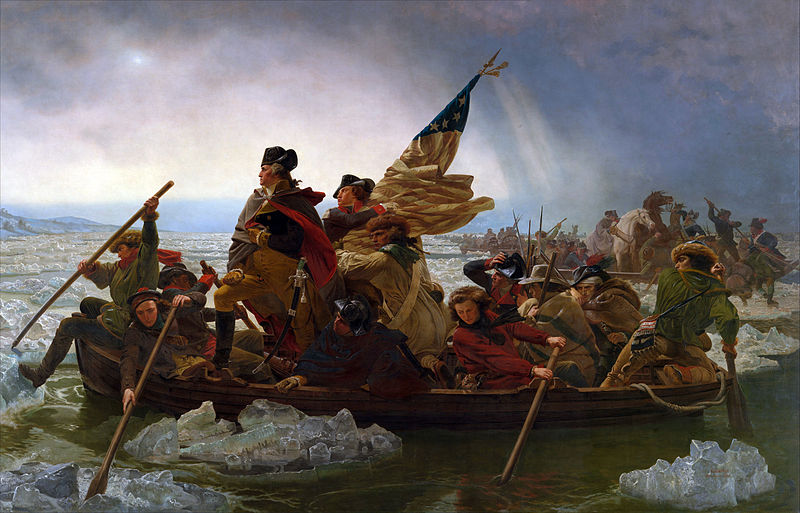
It was in the early 19th century when the German-born artist Emanuel Leutze settled in the United States. His main interests was in depicting pivotal moments in history, whether in the form of portraits or monumental paintings of famous battles and other events.
As far as paintings of the United States go, one by Leutze is up there with the all-time greats. About 75 years after the incident, in 1851, a painter named Gilbert Stuart created a work of art called Washington Crossing the Delaware.
Washington led his troops across the Delaware River on Christmas night and into the morning of Christmas Day, defeating Hessian forces stationed in Trenton, New Jersey, and securing a decisive victory over the British.
The picture shows a courageous George Washington standing on the bow of the boat, gazing toward the land as they row across the frigid river. There is an American flag held by Lieutenant James Monroe, who is standing behind him.
While this picture is sure to evoke the emotions of those who have long admired the painting, anyone with knowledge of history or boating will attest that if Washington and Monroe had stood up in the boat, it would have capsized.

